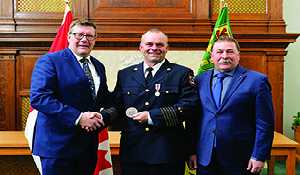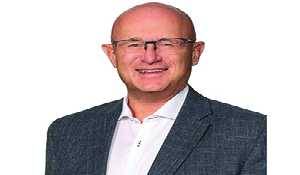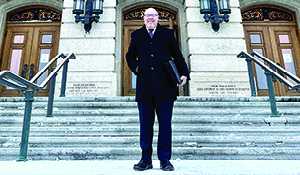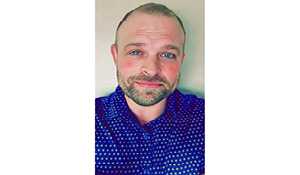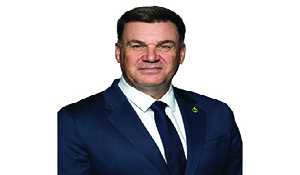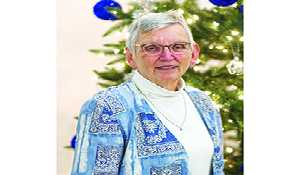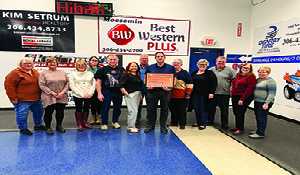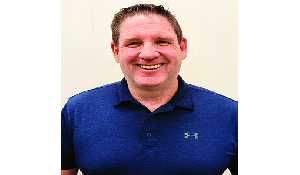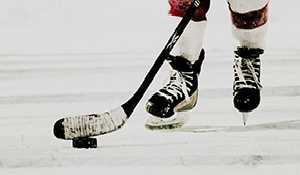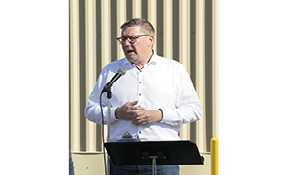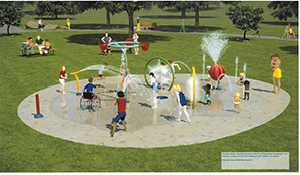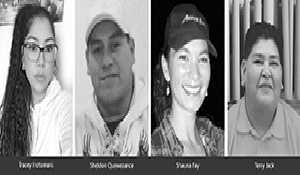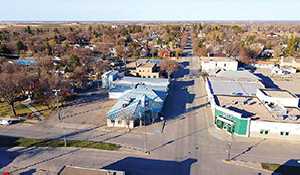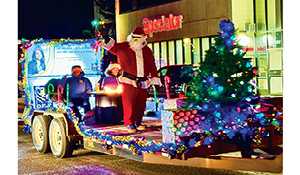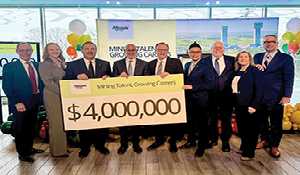Southeast Cornerstone School Division: Masks required on buses, and when student groups mix
August 30, 2021, 2:14 pm
Kevin Weedmark
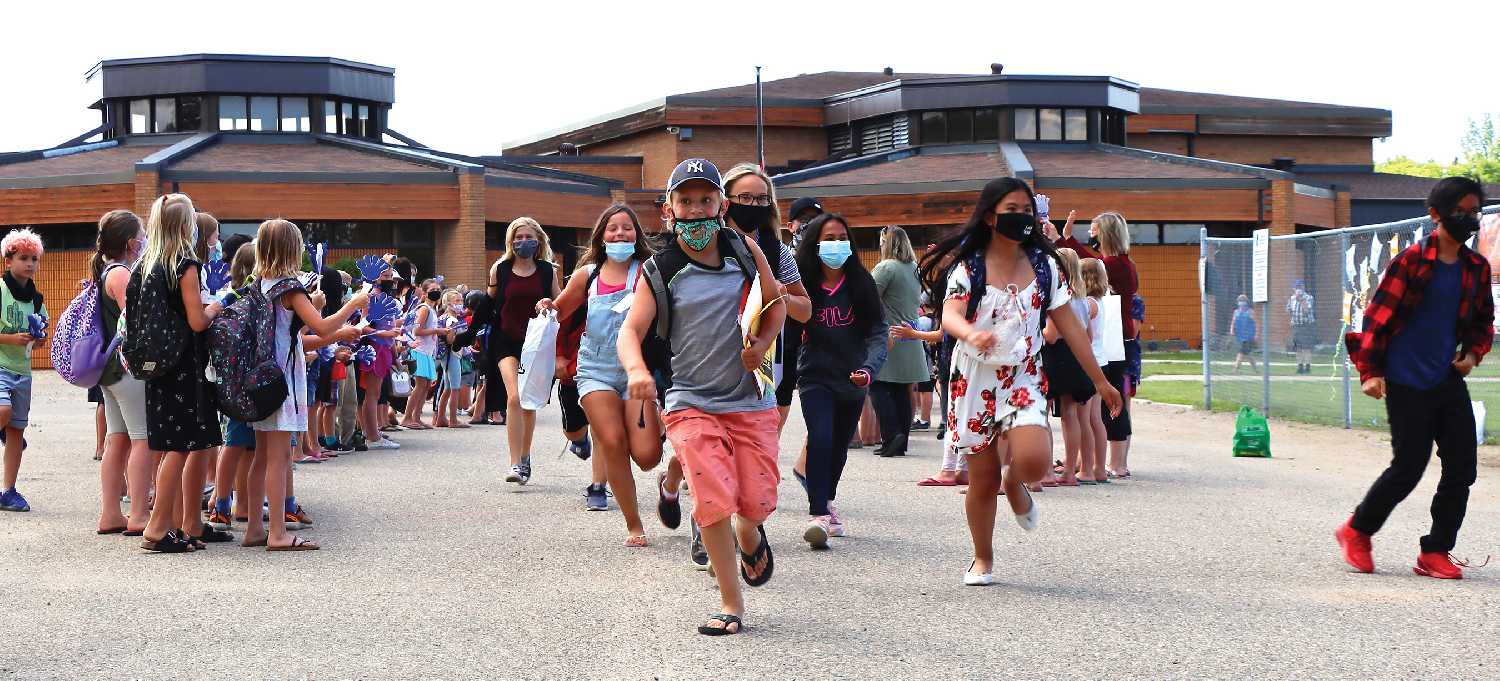

The Southeast Cornerstone School Division’s back to school plan for this September includes a masking requirement aimed at protecting students in Grade 6 and younger, who cannot be vaccinated at this point.
Those students must mask when different groups of students are mixing, other students and adults must wear masks when the pre-6 students are mixing, and masks will be required at all times on the school division’s buses.
Students in Grade 6 and under will be required to wear masks indoors at times where student cohorts are mixing such as assemblies or paired class activities while in an indoor setting. Cohorts are defined as groups of students who are together for the majority of the school day. At the PreK-6 level this is by grade/classroom.
All adults and students Grade 7 and over, including visitors, vaccinated or not, are required to wear masks indoors when in areas and at functions where children under the age of 12 (Grade 6 and under) are present and in mixed cohorts.
All students, PreK-12, and staff are required to wear masks on school buses due to the proximity of students who have not had access to vaccinations and the mixing of cohorts. This will be revisited upon vaccination availability.
All individuals, students, staff, and visitors, who are not fully vaccinated are strongly recommended and encouraged to always wear masks while at school, or during school events. This is especially important, and is a staff responsibility, for staff working with children under the age of 12 (Grade 6 and under) and for students who are immune compromised.
Visitors during the school day are directed to attend the office. Visitors to classrooms are not permitted during the instructional day to Grade 6 and under classrooms.
Masks will be made available at the schools.
Based on local epidemiology including potential outbreaks at schools and in communities, masks may be required in specific schools for all ages, staff and students, for the duration of the outbreak. This decision and direction will be made in consultation with local medical health officers.
If a full class has been identified as close contacts by health officials and if they are self-isolating, the class will move to remote learning for that period of time.
We spoke with Southeast Cornerstone Director of Education Lynn Little about the plan,
What were some of the top priorities you had in mind as you came up with this plan?
Well first and foremost we’re focusing on providing a safe environment for all the students and staff, and our plan very much focuses on added layers of protection for children who were born later than 2009 who do not have access to vaccinations, which we’ve been advised is that first layer of protection.
So while we are planning a return to many pre-pandemic practises, we wanted to do that in a way that protected the most vulnerable in our schools and that’s the children that are essentially under Grade 6. So when you look through the plan, you’ll see a lot of focus on those younger folks.
What are the most important parts of this plan for staff, parents and students to be aware of as they go back this fall?
We’re retaining many of the effective practices from last year. We continue, most importantly, to request that everybody self-assess daily for symptoms and if symptoms are present please do not attend the school, please get tested prior to returning. So that first and foremost, that’s really an important piece. We’re going to continue to focus on sanitation in the schools and on the buses. We’ve restricted visitors to classes under Grade 6, as those are our vulnerable population. We’ve retained cleaning, additional cleaning in the Pre-K and K classrooms of all the equipment because there’s many, many toys—play and exploration is the curriculum there—so we’re really ensuring those pieces are sanitized properly. We will have seating plans on buses and in classrooms that are accessible for contact tracing and we’ll continue with attendance taking and seating plans on the buses.
Last year we had the students sit in their family cohorts on the buses. This year we do not have that. We’ll be able to have more choice seating but it is seating planned. We’re going to continue to promote proper hand hygiene and cough etiquette and teaching of that in the system as well as having those sanitizing stations in each learning space.
Regarding masking which many people are wondering about and thinking about and that seems to be the piece that attracts much attention. Again, we’re really focusing on our younger population so masks will be required when cohorts—which is essentially a classroom of students—are mixing with other classes.
So they won’t be wearing them in class all day? It’s just if they’re in the hallways or mixing?
And even not necessarily in the hallways. If the class is just themselves . . . Let’s imagine there’s a Grade 2 class and they’re on their way to the library and when they get to the library they’re going to be the only class in the library. If they leave the Grade 2 classroom and they walk as a group down the hallway and they’re the only folks in the hallway at that point going into their library space, there’s no requirement for masking.
Now if they go to the library and there’s another class that’s in there at the same time, another cohort of children, then we would ask for masking. Only when those cohorts are actually mixing then we’re asking for masks.
We also have a requirement for masking on the buses and that’s for everybody that’s on the buses. And the reason for that is because it’s such a confined, closed, indoor setting and there’s children on the bus that are under Grade 6. So if it were an older team of students that are going somewhere, they wouldn’t require the masking if there are no children under Grade 6 who haven’t had access. So that’s an extension of that piece. I thought maybe I’d clarify that as I’m not sure if folks are understanding that always.
So as you developed this plan did you consult with local medical officials or the provincial medical health officer or other groups when putting this together? What kind of consultations were there?
Yes, yes and yes. We absolutely worked with the provincial plan and also had meetings with ministry officials. In the provincial plan, we are directed to work with our local health officers. We are a part of two former health regions, so we do have two local medical health officers that we worked with and we were often able to meet as a team. So we have met several times and continue to have meetings scheduled, I have one this afternoon for example. And we are certainly appreciative of their guidance and their support and the collaboration. We have followed all those different pieces and are working through at that local level.
Yes, absolutely we worked with all those folks.
In coming up with this plan, did you work with the other school divisions and are the divisions co-ordinating your efforts or was the province providing some direction, or was the actual plan developed independently by Southeast Cornerstone?
Certainly we’ve been in conversation with other boards and systems. We have weekly calls with board chairs across the whole province and then with me as directors we meet weekly across the province. Our plan right now is very closely aligned with Holy Family School Division’s plan because their boundaries are within our boundaries with the exception of one community. We are serving the same communities, we work with the same two local health regions, and because we’re working with the same communities then all of the different pieces within each community, the transmission rate, all those other pieces are in common. So our plan is very closely aligned with theirs. With Prairie Valley, we know what their plan is. We know what Good Spirit’s plan is. We’re aware of what everybody’s is and that they all have that local context to them.
How confident are you that this plan will be able to prevent Covid outbreaks in your schools?
The plan’s built on layers of protection and the more layers of protection, it’s my understanding, the better.
Can we prevent outbreaks? Well, we’re certainly hoping to limit them, isolate them and then respond as they arrive.
With the Delta variant I believe it’s really important that we continue to seek advice from the experts and implement practices that will add to those layers. I think the work that we’re doing will limit outbreaks. We’ll continue to work with our local medical health folks and implement layers as required.
How flexible is this plan if things change? Is there contingency plans or backup plans if situations change?
Definitely. As you would be well aware and folks would be aware, we had many more layers of protection last year because there was that whole Safe Schools Plan that was released from the government last year. We had pieces in place with that. So if required we know how to do it, we did it well and we would be able to pivot back to whichever layer within that plan, whichever piece within that plan we needed to do. We have that, we’re there, we’re ready to go.
How difficult has it been over the last year and a half to navigate this changing situation with Covid?
I think it would be disingenuous of me if I didn’t suggest that they have been the most challenging months that we have ever traversed without a doubt.
It’s challenging. It changes all the while, there’s no doubt, and then there is the polarization we’re seeing in society and that’s a struggle because we’re serving all of our communities and of course we have that diverse, very strong diverse opinion.
So we’re really trying to stay focused on the experts and the experts that we rely on are telling us what to do to keep folks safe. We had our open administrator meeting yesterday face-to-face. It was the first time that all the in-school administrators and system administrators have met since March of 2020 face-to-face and there was such a buzz in the room, it was just alive.
That must have been wonderful for them to see one another in person again.
Absolutely! And as a group we talked about how we’re looking forward to getting back to school with some pre-pandemic practices and then the added layers.
We talked about how we came through a really, really tough year and if things change this year and they take another dive, one way or the other we have the courage and the strength to address that because we’ve had the experience.
There was so much camaraderie in the room. Everyone said okay, we went through that together. At times it would have felt isolating last year when we were unable to be together, but it really felt good to be together and I’m just so hopeful that next Wednesday that’s what it’s going to feel like in all of our schools.
How important is this to you that everything possible is done to keep students safe from Covid-19?
Crucial, just crucially important. We focus on that always. We have our interim plan, our learning plan, that we rolled out yesterday with administrators. Again, having conversations last year of course, but working with administrators yesterday, and they’ll be rolling it out with their staff, they begin today actually. So we’re really focusing on that.
One of the first pieces is connect, connect, connect. Let’s really bring folks back together, bring our students back together, our students with our staff, let’s go back to some of the activities that we couldn’t do, let’s work in our small groups. As we know, students learn best when they’re collaborating and working in small groups and have opportunities outside of the classroom.
We’re really, really excited about being able to do all that, but we also know we have to do it in the safest way possible and that we need to be ready to change if need be. It wouldn’t have been anybody’s wish that we are still impacted by Covid-19, but it’s the way it is.
It’s imperative that we do all we can to support safety and that’s especially true for the children that were born after 2009 who are vulnerable to the virus and its variants.
We’re looking forward to the year. 2020 was a difficult year. 2021 resembles 2019 more than it resembles 2020 at this point in time.
You’re hopeful this is going to seem more like a normal school year?
We’re hopeful right now, but when we look around we have to be really realistic about what we’re seeing and hearing and be ready. We’re hopeful and we’ll carry on as best we can and resume as many activities as we can and do it as safely as we can.
